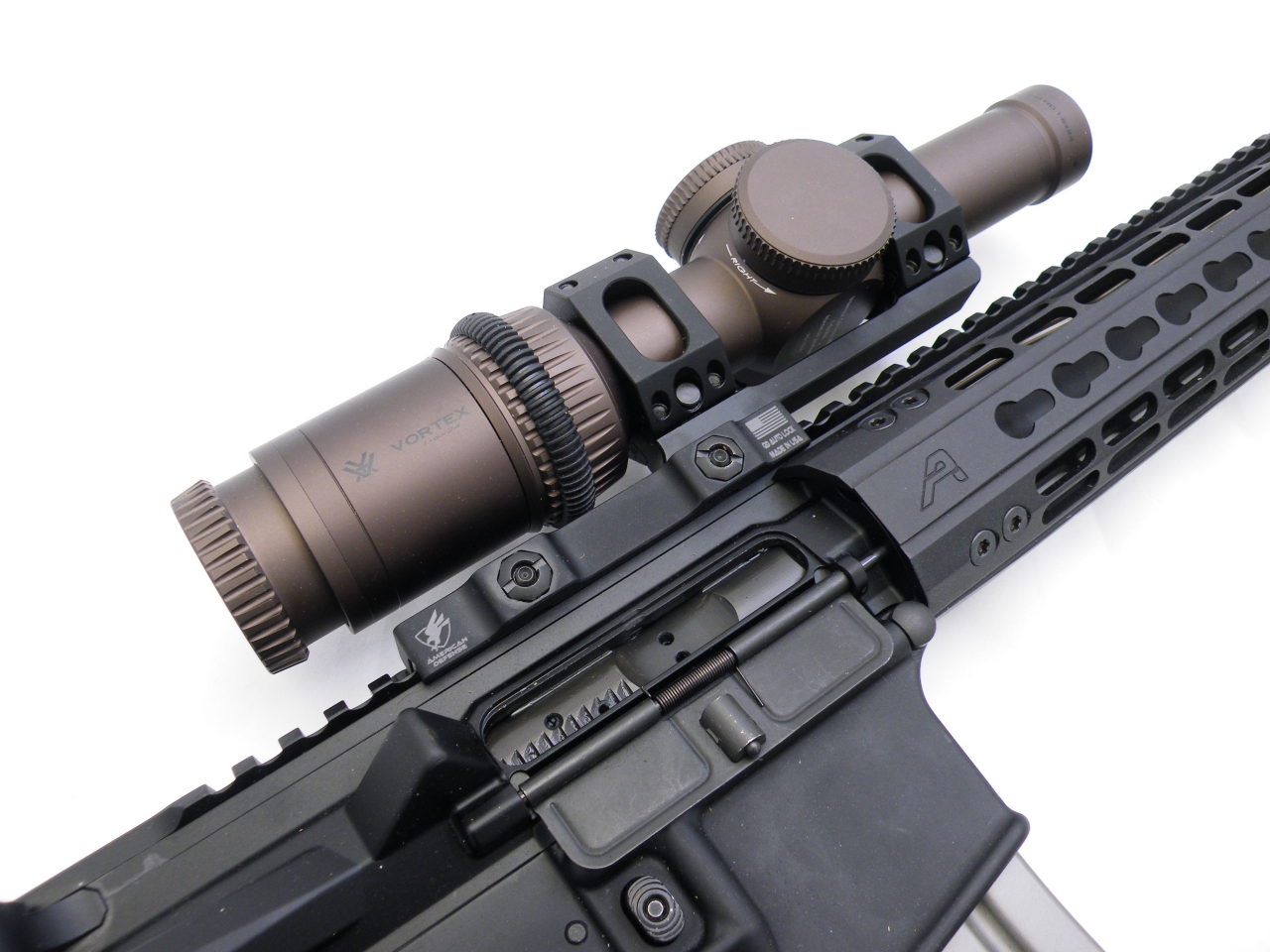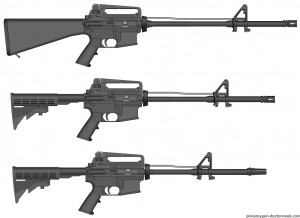Want to pick the best AR15 for your dollar, but you don’t know where to start? I have put together an easy to use buyer’s guide to help educate you on the basics of purchasing your first black rifle. My name is Lothaen, and I have owned this site since 2013. I am independent. My Mission: to help propagate the AR15 into the hands of the American People… After all, it is America’s Rifle. First things first; there are too many manufacturers making AR15s to review each and every model… This guide will help you understand what you should be looking for when you buy an AR15.
Let’s look at three important fundamentals for purchasing your first AR15:
1) Quality control is the #1 important issue in the AR15 world. The AR15 design has been around for decades. How well do manufacturers adhere to the design’s important specifications? What resources do they commit to ensuring that every rifle that leaves the facility will be void of defects?
2) A company’s adherence to known standards of quality. The term “Mil-Spec” is used often, and it makes for great marketing… but many companies who advertise “Mil-Spec” might be telling a half-truth. We will explore some quality indicators to help you make sure you are choosing a truly well-made rifle.
3) A company’s ability to correct any quality issues with excellent customer service. There are plenty of reviews on the internet that claim brand X is great, but another person claims brand X is junk. The simple fact is that every manufacturer can produce a lemon. The question is, will they fix it without a headache?
These three principles center around the idea that you want to choose a company that built the rifle right the first time and has built it with known indicators of quality. This will reduce your chances of getting a problem-prone weapon.
Let’s look at, in my opinion, the most important specifications a manufacturer can adhere to:
- High Pressure Tested bolt and barrel
- Magnetic Particle Inspection of bolt and barrel
- Shot-peened bolt
- Gas key properly staked
- Mil-Spec 11595E Barrel Steel (or 4150 steel)
- Chrome lined barrel
- M4 feed ramps (the modern standard)
- 5.56 NATO chamber (alternative: .223 Wylde)
As a rule of thumb… these are selling points. A manufacturer wants to inform the purchaser that their rifle meets these specifications. As you are browsing for a rifle, look for the above. If the manufacturer doesn’t tell you that the bolt is MPI, HPT, and shot-peened, then it probably isn’t.
This goes for the barrel too. If the manufacturer doesn’t mention what type of steel is used, then assume it is 4140 chrome-moly steel. If it doesn’t say chrome-lined… then it probably isn’t. What the manufacturer doesn’t say is every bit as important as what they do say! This is a rule of thumb, so be sure to do your research on the rifle you intend to purchase. Make sure that the rifle your buying has a 5.56 chamber! This allows you to shoot both .223 and 5.56 safely. A “.223 Wylde” chamber is also acceptable.
The Mil-Spec controversy:
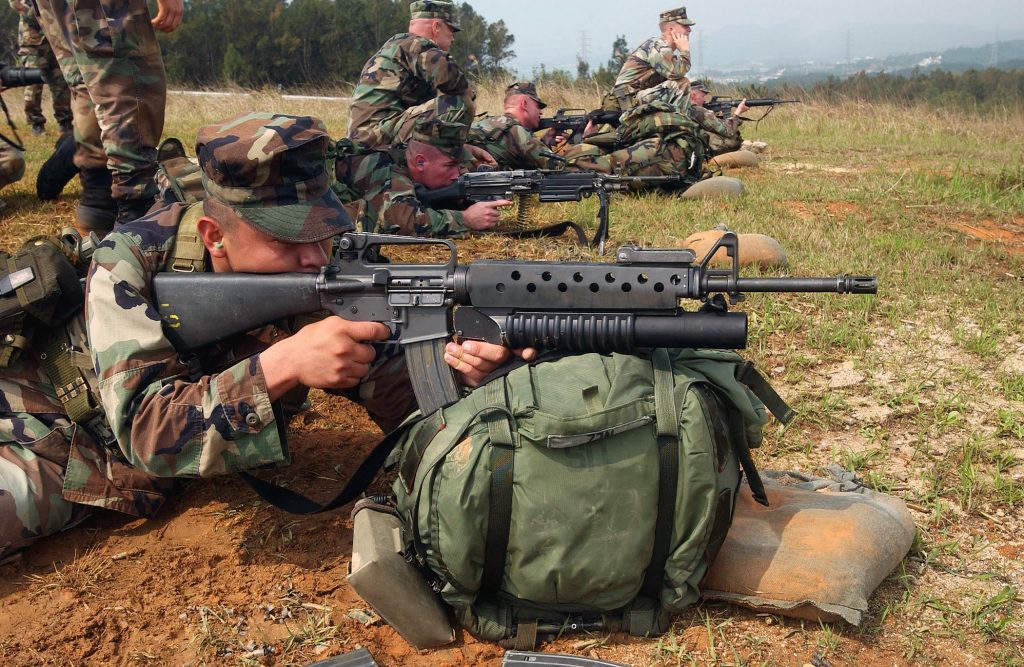
US Marine Corps (USMC) members from L Company, 3rd Battalion, 3rd Marine Regiment, 3rd Marine Division, perform a biathlon on the Camp Hansen ranges, firing a Colt 5.56mm M16A2 Assault Rifle.
Oh boy. Perhaps you stumbled on a forum post that says 4140 steel barrels are every bit as good as 4150 for civilian use… Or that modern metallurgic processes have reduced the need for HPT and MP inspection of the bolts. My first rifle was a non-mil-spec rifle. It had a batch tested bolt. It had poor staking on the gas key. It had the softer 4140 barrel steel. Basically, it was not fit for military quality standards, but it ran like a Swiss watch. It never jammed; it took all the abuse I could throw at it. In all, the rifle performed well and was accurate to boot… but I was lucky.
Many off the shelf rifles will run fine for the occasional range trip and sporadic use… but push a cheap rifle hard and you will then find the flaws come out front and center. Think of the “mil-spec” features as a benchmark that a rifle must pass before it leaves the factory. I can train a group of men to run a marathon, but in the end, there are some who will fail to finish the race. Wouldn’t it be wise to develop some standards to test them against before letting them on the varsity team? Absolutely. When you are choosing to buy a rifle that meets certain standards, you are ensuring you get a rifle that can finish the race. This is why Mil-Spec is important; it’s a minimum standard!
My old brand X rifle functions well and *might* give me a lifetime of use. Take 10 of its brothers and pit them against Bravo Company rifles and I would bet cash money a few brand X rifles would go down while all the Bravo Co rifles would still be functioning. This is the difference.
So now you know what specifications to look for… the next question is how do you choose from so many AR15 variants?
Which configuration should I buy?
If you have read other areas of this blog, you might have caught on that I really like the Rifle length system. That’s me. I have my own reasons why I like the rifle length system, but right now carbines are popular. So what type of weapon should you look for? Let’s start with gas system length.
There are three common gas systems available; carbine, mid-length, and rifle length. Which one you choose will determine how soon the rifle begins to extract the shell you just fired. The AR15 uses gases tapped from the barrel to begin the cycle of ejection and feeding a new round into the gun. The closer the gas port is to the chamber the higher the system pressure used to cycle the rifle. Ideally, we want the pressure to drop to a level where the gun can slide the spent shell out of the chamber easily. The three different gas systems affect extraction in different ways:
1) The carbine length system will begin to extract the case with the earliest timing of the three gas systems. The brass case is under tremendous pressure and is sealed against the wall of the chamber. The carbine’s extraction process has to work hard to overcome the tremendous pressures still present in the case during extraction.
2) The mid-length system is next. Optimized by Armalite for a 16-inch barrel, the mid-length system taps gas further down the barrel which increases the length of time before it begins extraction. This results in the pressure dropping a bit more before the case is extracted. Getting Better.
3) The last system is the rifle length gas system. Typically this will be found on 18-20 inch barrels. The rifle-length system will have the lowest case pressure during the extraction of the three systems. This is the original design of Eugene Stoner’s AR15 weapon system. This system will have the most trouble-free performance of the three systems. It delays the extraction longest and allows the case pressure to drop to aid in the easy ejection of the spent case.
Carbine, Rifle, or… Pistol?
Even though the carbine has an “aggressive” gas system, it is still a reliable machine. It may experience parts breakage sooner in its life than the other configurations, but we’re talking many thousands of rounds before that *might* occur. I just wanted to preface this next section with that. So it’s time to decide if you want a carbine, rifle, or pistol.
Do you want it as short and portable as possible? Buy a pistol AR15. These “pistols” are allowed to have an arm brace (it looks like a stock, but is made to stabilize against the arm) yet because they are pistols you can purchase them with very short barrels. Many have carbine length gas systems. These are the ultimate in portability, but consider that there will be lots of concussion! If you are going to buy a suppressor in the future, these builds will give you a compact, suppressed package.
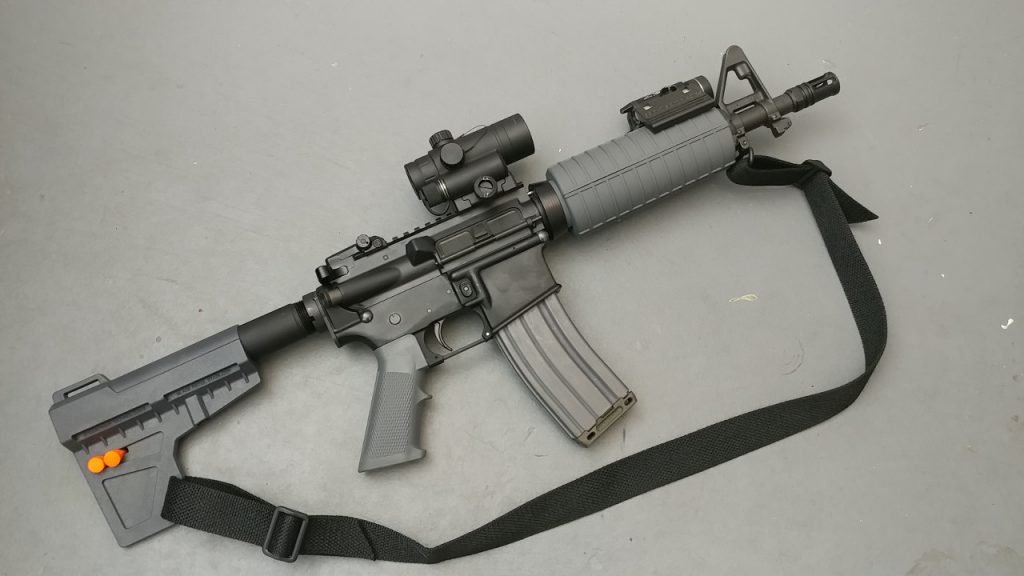
A 10.5 inch Palmetto State Armory pistol kit. Compact, loud, but lots of fun. Still hurty enough for self-defense.
Do you want it to look like an M4? Buy a carbine with a pinned flash hider on a 14.5inch barrel with a carbine gas system. It will be light and very handy fighting machine should you need to use it for defensive purposes. A pinned flash hider is necessary to bring the overall length of the barrel to the legal 16-inch mark. A solid all-around choice.
Do you want a short package like an M4, but care more about durability and shoot-ability? Buy a 16-inch barrel with a mid-length gas system. This is a compromised system. It is a bit higher on theoretical reliability than the carbine, but less so than the rifle. If you want a jack of all trades to start with the mid-length 16inch AR15. This will be another excellent all-around shooter.

Do you want an M16 clone or a rifle high on reliability and muzzle velocity? Get a rifle length system. Typically these will come in 18 inch and 20 inch flavors. With the rifle length system we have arguably the most reliable AR15 of the weapon family. It also has the highest muzzle velocity, and it is one of the softest shooting variants of the three systems.
IF you want the nitty-gritty details of pressure, dwell time, army reliability tests, ect. then you might need to snoop and search around forums such as AR15.com and M4Carbine.net. Now that we have covered the gas systems, its time to decide your rifles goal: do you want tack-driving accuracy or a tough, long-wear fighting machine?
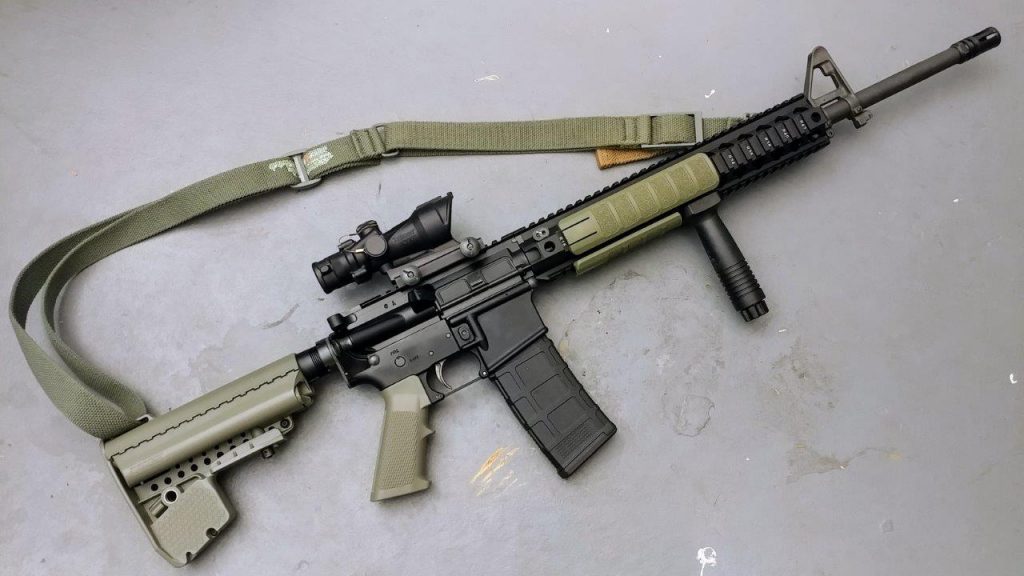
Barrels: Accuracy, Precision, and Durability
Here we are going to touch on three popular barrel types. This is a quick overview of the barrel products, and if you want a COMPREHENSIVE overview, please visit my Barrel Buyers Guide: Turbo Edition! Let’s touch on the strengths of the different style of barrels on the market:
1) Chrome Lined: long-lasting, hard, slippery surface which is added to the bore to increase life and reduce rust. Chrome lined barrels will last a great many rounds before deteriorating. Due to slight inconsistencies when applying chrome to the bore of a barrel, they are considered less accurate than other options. Keep in mind that the Marines use a chrome-lined barrel to hit man-sized targets at 600 yards. These barrels can typically do 1.5 to 2 inches at 100 yards. This option will have a long bore life and be more forgiving of less frequent maintenance.
2) Stainless Steel: these barrels will be extremely accurate, but will have an overall shorter life span than chrome. As the barrel erodes the match-grade accuracy will degrade to very good accuracy. In some cases, we have SS barrels that have gone 10000 + rounds and still perform well enough to be considered fighting rifle accurate. See ADCO firearms test here. This is the barrel you want if you value accuracy over barrel life. Typically capable of 0.5 – 1.0 inch groups at 100 yards with match ammo.
3) Nitriding: Often cheaper than chrome-lined and stainless, these barrels use a bath process to impart an extremely hard layer to the surface of the steel. Nitriding has more lubricity than chrome, it is harder than chrome, and does not add inconsistency to the thickness of the bore. This is a layer that is added both to the bore and outside of the barrel. These barrels are a great balance of accuracy and durability. I would rank them between SS and Chrome lined.
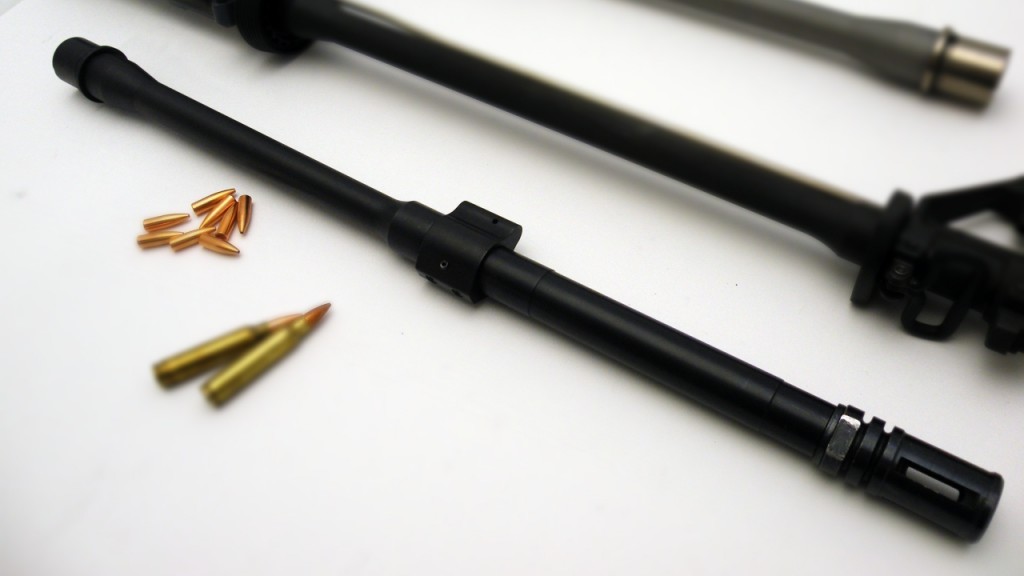
Nitrided barrels are becoming well established and they offer clean looks and good to excellent performance at a budget price.
Everything has a bit of a trade-off. Keep in mind that you get what you pay for. A match-grade chrome-lined barrel from Criterion will lean towards the accuracy of a SS barrel as an example. If you want the best, prepare to pay the cost. Speaking of expenses, there are other products that add to a rifles overall costs: let’s discuss tactical rails.
Should You Get a Free Float Rail?
It is very common to find rifles that come standard with a tactical rail. The question is do you need this upgrade? I don’t free-float all my rifles, yet they are still capable of hitting man-sized targets to 400 600 yards with a chrome-lined barrel. Here is a video I did of my rifle for a post I put together a while back: in the video I compare red dots with iron sights but it is a good video to show that a non-free-floated rifle can hit distant targets easily.
That’s accurate enough for me, but maybe you want all your bullets to go through the same hole? If that is the case then investing in the free-float system will be a wise choice. Free-floating eliminates unwanted interference from the barrel by isolating it from the hand-guard. Many free float rails have slots or rails to mount things like lights, lasers, bipods, foreword grips, ect, and in recent years, modular rails such as MLOK or Key-Mod have become popular for their lightweight and affordability without sacrificing utility. At this point in time (2019) most companies offer these modular rails for very little extra cost, and they appear to be cheaper than plastic hand-guards and the related sub-components. Go ahead and free float to save yourself the upgrade down the road.
What About Monolithic Uppers?

A monolithic AR15 upper receiver, such as the LMT MRP utilizes a single upper and rail machined in one continuous piece. These rifles integrate the free float rail and upper receiver into one rock-solid unit. These receivers are extremely rugged platforms for building an accurate, hard use rifle. While the initial cost of a monolithic or polylithic AR15 upper may seem high, they offer exceptional strength over other systems.
Clone Rifles:
So by now, you have your carbine or rifle picked out with a certain goal in mind. Some people want not only a shooter, but they want a clone of a military issued AR/M16. There are numerous rifles one could clone, but let’s touch on some of the more popular builds:
Recce: A carbine with a 16 inch barrel utilizing a stainless steel barrel for match-grade accuracy. A great choice for a do it all style rifle. Top this type of gun off with a 1-4x variable and you have a jack of all trades. Accuracy in a small package.
SPR: A 18 inch stainless steel barreled weapon used by the military. A “Special Purpose Rifle” used in a marksman role. A very popular and accurate configuration. Extremely Accurate.
M16A2: You are likely to find one of these clones in the gun shop rack. An A2 fixed carry handle upper receiver with a 20 inch barrel and a fixed butt-stock. Overall a good rifle but many view the lack of a railed upper receiver as outdated. The carry handle does limit your optics choices, but is a very shootable as is rifle.
M4 clone: This build is a very common offering from various manufacturers. They can be found with 16 inch barrels or 14.5 inch barrels with a pinned flash hider. This ensures that the total barrel length is 16 inches. A very small and handy AR15 package.
CAR: Typically these will be found as carbine length gas systems with a 16 inch barrel and an A2 carry handle. Gun-shops might have a few of these configurations on the rack. These rifles can also be found with an 11 inch barrel and a very long pinned flash hider. I would avoid that configuration due to velocity loss and poor upgrade potential.
M16A4: Clones of this rifle will have a 20 inch barrel with a flat top upper receiver and a KAC M5 RAS. It’s a smooth shooting rifle with a long sight radius and great upgrade potential. Not as handy as the M4 type rifles. Typically it will have a fixed A2 butt-stock. FN makes a ready made M16A4 MWS.
M16A1: Clones of the M16A1 are for people who want the look of a Vietnam era M16. This is a lightweight, full size rifle, and numerous companies offer a ready made clone: Brownell’s Retro Line is a good example.
Mix and Match
You will encounter many groups of shooters who enjoy building clones of older AR15 variants all the way to the latest military configurations. Many of these clones are great shooters, but if you are not worried about the clone aspect, I would recommend that you build a rifle to your needs and specifications. Choose a rifle that suits your needs. Maybe you need a tiny package with extreme accuracy to fit in the trunk. It is perfectly OK to build a rifle with a 14.5 inch stainless steel barrel, a pinned flash hider, a collapsing stock, and a 6x optic. Not a clone of anything, but if it suits your needs then make the purchase.
9mm AR15, .300 Blackout, and Other Calibers
There are many other caliber choices available for the black rifle, and each has its own advantages and disadvantages.
Pistol caliber carbines and pistols are growing in popularity. They are lightweight, share the same ergonomics as big bro 5.56, yet have substantially less concussion when equipped with short barrels. These carbines are, by and large, blowback operated. This can be a bit of a drag as blowback guns typically need a heavy bolt to delay the case extraction… and all that extra bolt mass reciprocating makes many PCCs feel as though they recoil more than a full power 5.56 rifle!
One of the newer operating mechanisms offered for a PCC carbine is CMMG’s radial delayed blowback. This allows them to use a lighter bolt group and thus reducing reciprocating mass. I dont have hands-on with this one, but reports are coming in as very favorable. If you go with a PCC, I would recommend buying a complete gun rather than building to avoid compatibility problems. Oh, and get one with Glock magazines. They have made *millions* of Glock mags so it’s easy to keep your gun running with fresh magazines.
Non-blowback cartridges such as .300 blackout are another popular option. Ballistically similar to 7.62×39 but with a 5.56 parent case, the .300 blackout has grown into a respected caliber in the AR15 platform. It even shares the same magazines as 5.56 rifles!
.300 blackout was made to be an easily suppressed, hard-hitting cartridge / rifle platform. It accomplishes those goals well. The one main suggestion I would have for anyone looking to buy a .300 BLK would be to carefully label and separate magazines and ammo. Many shooters have accidentally chambered .300 BLK in a 5.56 gun and caused a dangerous Kaboom! Be meticulous with your range trips!
Some Personal Recommendations:
For shooters on a budget, I recommend grabbing an AR15 lower receiver at the local gun shop (almost any will do) and building a Palmetto State Armory kit. The reason for this is that a whole rifle has a federal tax applied to it of 11% so by building your own lower and slapping a kit upper on it, you will avoid that cost and learn lots about your rifle. I currently recommend the PSA 10.5 inch pistol kit for a beginner. It is lightweight, compact, and keeps things simple. With quality defensive ammo, it will serve you well from 0-300 yards. At the time of this writing, the kit is $419.99. Add a lower receiver and a rear sight… and you are good to go.
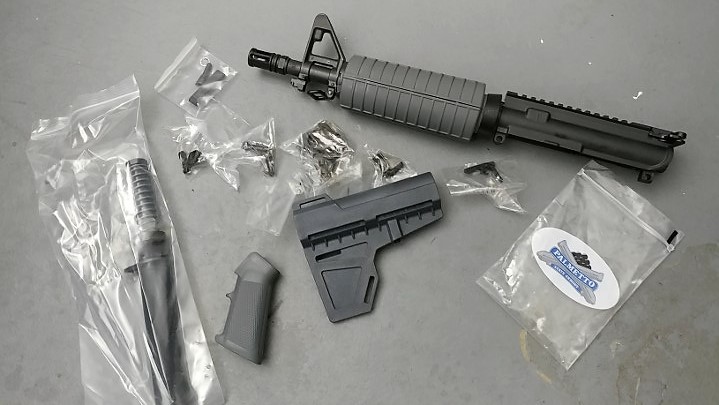
The PSA pistol kit is clean, well organized, and compact enough for high maneuverability indoors.
If building your rifle is intimidating, here is what I would buy on a budget: The Aero Precision AC-15M. This rifle is a little more expensive than the PSA kit, but overall there is a touch better quality on an Aero Precision rifle, and I use AP throughout my blog as I have built multiple carbines out of AP parts.
If you want a second opinion on this rifle, check out Mr. Guns ‘n Gear’s Review on YouTube (opens in new window).
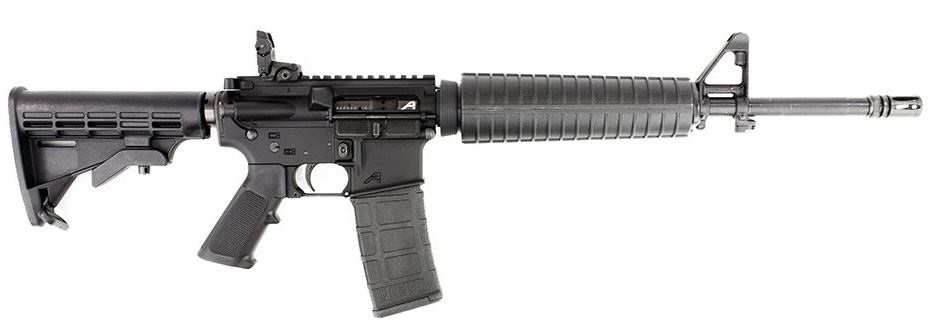
Why I recommend it: It’s at an attractive entry-level price point and it meets the important specifications for a quality AR15. It also has the desirable mid-length gas system and a fixed front sight which is a nice balance between sight radius and the extra rail space for when you upgrade to a free float rail. This is a basic, but useful all around carbine. I personally own lots of AP gear and its all quality, hence why I am a fan. It’s currently available for $739 at Brownells.Com SOLD OUT.
Wow, guys, everything is sold out. I am updating this page as things change, so my next recommendation is an Aero Precision M4 Carbine from Brownells. It’s more expensive but that’s due to the factory RAS system. Check it out here at Brownells.com and use code WC3 after you add it to your cart.
Wrapping Up:
This seems like a lot of information. It is. When buying your first AR15, I want you to know what to look for and then decide what is best for your application. Purchase a rifle which meets identifiable standards of quality. If a manufacturer does not advertise the mil-spec feature set, then they probably don’t adhere to it. What if you already purchased brand X? That’s OK. As long as it functions properly it will probably give you many years of use. If something breaks replace it with quality mil-spec components. If you take Brand X to a carbine class you better take spare parts. I hope this buyer’s guide was a helpful introduction to America’s rifle: the AR15. If you are looking for more detailed information about anyone component, search a few forums. I hope I helped you get your feet wet!
Hope to catch you on the range soon!
Links to A Few Quality AR15 Manufacturers:
Aero Precision – My go to for reliable, quality equipment
Bravo Co – Need it mil-spec? Go here.
Colt – Ditto as above
Daniel Defense – Better than mil-spec? Maybe, just maybe.
KAC – Mr. moneybags you got too much to spend and need the brand blessed by Sir Stoner himself. Click there.
LMT – The supplier of the new gov’t issued carbine to the Kiwi’s and the British L129A1.
Palmetto State Armory – On a budget but need something solid? Go here.
More Reading:
For some history behind the AR15, visit Eugene Stoner: The forgotten History





